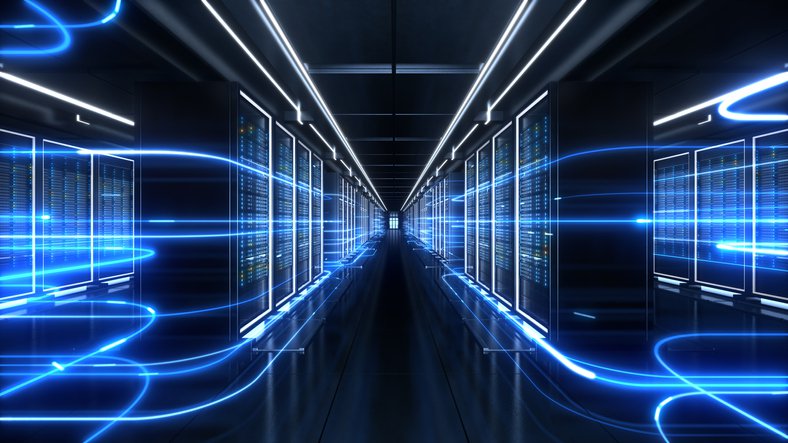The Future of Data Centers: Trends and Predictions
The data center industry is evolving rapidly, driven by advances in technology, changing business needs, and growing demand for digital services.
Trends and predictions for the future of data
centers:
- Edge
Computing: Edge computing is an
emerging trend that involves processing data closer to the source, rather
than sending it to a centralized data center. This allows for faster data
processing and reduces the load on centralized data centers. As more
devices become connected to the internet, edge computing is expected to
become more prevalent.
- Cloud
Computing: Cloud computing has already
revolutionized the way that businesses store, process, and manage data.
The trend towards cloud computing is expected to continue, with more
businesses moving their applications and data to the cloud.
- Hybrid
Cloud: A hybrid cloud is a combination
of public and private cloud infrastructure. This allows businesses to take
advantage of the benefits of both public and private cloud, such as cost
savings and security.
- Green Data
Centers: Energy consumption is a
major concern for data centers, with the industry responsible for a
significant portion of global energy consumption. Green data centers that
use renewable energy sources and energy-efficient technology are becoming
increasingly popular.
- Modular
Data Centers: Modular data
centers are pre-fabricated units that can be quickly deployed to meet
growing demand for data center capacity. This allows businesses to quickly
scale their data center infrastructure as needed.
- AI and
Machine Learning: AI and machine
learning are being used to optimize data center operations, such as
predicting and preventing equipment failures, optimizing cooling and power
consumption, and improving security.
- Security:
Data center security will continue to be a major concern, with businesses
investing in advanced security measures to protect their data and
infrastructure against cyber threats.
The future of data centers is expected
to be characterized by greater efficiency, flexibility, and scalability, driven
by advances in technology and changing business needs. As the demand for
digital services continues to grow, data centers will play an increasingly
important role in enabling businesses to store, process, and manage their data.
Green Data Centers: Advantages and Challenges
Green data centers are data centers
that use renewable energy sources and energy-efficient technology to reduce
their carbon footprint and energy consumption. Here are some advantages and
challenges of green data centers:
Advantages:
- Reduced Energy Costs:
Green data centers can significantly reduce energy consumption and costs
by using renewable energy sources such as solar, wind, or hydro power.
- Environmental
Benefits: By reducing energy
consumption and using renewable energy sources, green data centers can
reduce greenhouse gas emissions and help to combat climate change.
- Competitive
Advantage: Green data centers can
provide businesses with a competitive advantage by demonstrating their
commitment to sustainability and reducing their carbon footprint.
- Long-term Cost
Savings: While green data centers may
require an initial investment, they can lead to long-term cost savings due
to reduced energy consumption and lower operational costs.
Challenges:
- Initial
Investment: Green data centers may
require an initial investment in renewable energy sources and
energy-efficient technology, which can be expensive.
- Location:
The availability of renewable energy sources may be limited in certain
areas, which can make it difficult to build green data centers in these
locations.
- Maintenance: Maintaining
renewable energy sources and energy-efficient technology can be
challenging and require specialized knowledge and expertise.
- Scalability:
Green data centers may face scalability challenges due to limited
availability of renewable energy sources or the high cost of building a
green data center from scratch.
Despite these challenges, green data
centers are an important step towards reducing the environmental impact of data
centers and ensuring a sustainable future.
The Economics of Data Centers: How to Optimize Cost
and Performance
Data centers are a crucial part of
modern business operations, but they can be expensive to build and operate. To
optimize the economics of data centers, there are several strategies that
businesses can implement. One approach is to use virtualization, which involves
creating multiple virtual servers on a single physical server. This can reduce
hardware costs and improve server utilization, leading to cost savings.
Implementing energy-efficient technologies such as efficient cooling systems
and power distribution units can also reduce energy consumption and lower
operational costs.
Another strategy to consider is cloud
computing. Cloud providers can offer economies of scale and reduce the need for
capital expenditures associated with building and operating an in-house data
center. Server consolidation is another option that involves consolidating
multiple servers onto a single physical server, which can improve server
utilization and reduce hardware costs.
Using renewable energy sources such as
solar, wind, or hydro power can reduce energy costs and provide environmental
benefits. Optimizing data center design can also reduce operational costs by
improving cooling and airflow, reducing energy consumption, and increasing
server utilization. Outsourcing non-critical functions such as security or
maintenance can provide cost savings and allow for greater focus on core
business functions.
Overall, optimizing the economics of
data centers requires a comprehensive approach that considers factors such as
virtualization, energy-efficient technologies, cloud computing, server
consolidation, renewable energy sources, data center design, and outsourcing.
By implementing these strategies, businesses can reduce costs while improving
performance and scalability, allowing them to focus on core business functions
and stay competitive in today's fast-paced business environment.



Comments
Post a Comment